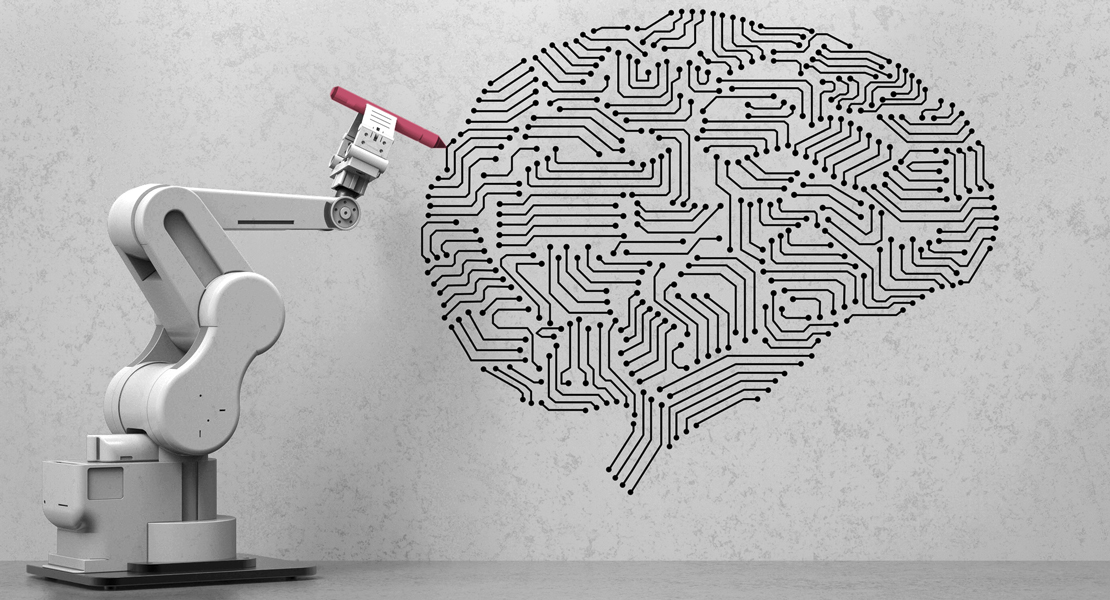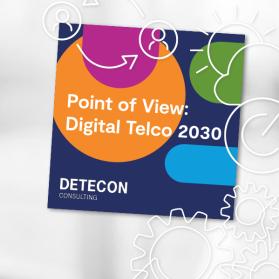Digitalization is in full swing and causing profound transformation in companies and even in entire industries.
The seemingly endless volume of data that can be collected via smartphones and innumerable sensors are valued as the new gold and are the basis for a stream of new digital business models. Along with the development of these new business models, however, the decisive factors that lead companies to success are also changing — on the market as well as during their organizational implementation in the company. What has long since been familiar in the IT industry is now becoming reality in other industries: strictly linear added value and strictly competitive strategies alone are no longer a guarantee of success.
The business ecosystem: networks and partnerships
Just as Microsoft would be unimaginable without its resellers and independent software providers, just as Amazon would not have turned into the giant it is today without the Marketplace, just as “made for iPhone” and the App Store have become almost proverbial, other industries must also organize the generation of their added value into networks and partnerships. New alliances are being constantly hammered out in a free application of the slogan, “Better together.” The boundaries between industries are becoming blurred, and it has become difficult to recognize who is competing or cooperating with whom and who is dependent on whom.
This dynamic interaction among a number of companies across all traditional industrial borders is called a business ecosystem. Derived from the biological definition of an ecosystem, a business ecosystem is viewed as a dynamic system that constantly renews itself and responds to disruptions and competition. Just like its counterpart in nature, a business ecosystem must be able at all times to adapt to changes, whether internal or external.
In a biological ecosystem, the species do not only compete with one another; for the most part, they live in symbiosis. The stability of an ecosystem is secure only when there is a great diversity of species and organizations as this enhances the ability of every single member of the system to survive and grow. The diversity in the many different organizations within the ecosystem gives to the system as a whole and, simultaneously, to every single company greater flexibility and a broader range of opportunities to respond and to innovate. Just as the organisms in a biological ecosystem are defined by their genetic material as well as by their relationships to their prey, rivals, and enemies, a company defines itself in a business ecosystem by its competencies and culture as well as by its association with suppliers, competitors, and customers.
Co-evolution: orchestrating new economic structures
Business ecosystems were explored in academic literature very early (Moore 1996). According to analyses, the most effective companies develop new business advantages by learning how to lead economic co-evolution through their understanding of the economic and social landscape (the ecosystem) and by seeking out potential innovation centers as partners. The task for every company is to orchestrate under its leadership added-value contributions from a network of potential partners.
Executives of successful organizations do not stop with leading their own organizations, but extend this leadership to their current competitors, i.e., their entire industry. They also act as catalysts to accelerate the confluence of disparate business elements into a new economic structure that gives rise to new companies, new non-profit organizations, new rules of competition and cooperation, and new industries. They contribute to the transformation of the entire ecosystem in which they operate.
Detecon study: digital ecosystem is the most important factor for success
These conclusions are repeatedly confirmed in business practice. We examined these areas empirically in the Detecon study “Success Factors of Digital Business Models” of December 2017. The conclusion: The respondents from a number of different industries viewed the creation of a digital ecosystem as the most important success factor. The build-up of an ecosystem with matching additional services (e.g., apps, accessories) was also regarded as essential for the creation of lock-in effects.
The respondents in the study were furthermore in agreement on the question concerning the conditions required for the build-up of a suitable ecosystem revolving around the digital business models of their own companies. Without adequate sharing of information, interfaces among the players, a clear definition of the company’s own role in the ecosystem, and the establishment of the ecosystem with respect to a specific portfolio that can be supplemented with additional services (music services, financial services, mobility services), the project is doomed.
Best practice: DKV shows how it is done
We experience the success factor business ecosystem in our client projects as well. For example, Detecon is accompanying DKV Mobility Services Group on its journey into the digital product world. A service provider in the logistics and transport industry, DKV is dealing with issues such as non-cash payments for services while en route (fueling and highway tolls), reimbursements for VAT, and much more for a clientele currently in excess of 170,000 customers in more than 42 countries. A new department called Digital Solutions has been created for the development and marketing of new digital solutions and has been assigned the task of developing solutions that are as closely aligned as possible with the needs of customers.
“Our aim is to make use of digital concepts to help us in the further development of the products we currently sell successfully as well as to develop new, data-based products that will complement our core products,” explained Frank Heimbürger, Head of Digital Solutions of DKV Mobility Services Group. As it develops and markets its digital solutions, DKV relies on the establishment of a broad and strong ecosystem comprising existing partnerships as well as other established market players, niche specialists, and innovative startups. “An ecosystem of strong partners is a key element of our digital strategy. We want to create win-win situations for our partners and for us and together set new standards in the transport industry with our solutions,” said Hendrik Rosenboom, chief digital officer of DKV Mobility Services Group.
Openness and flexibility versus rigid structures!
What conditions must exist within companies if they are to be able to thrive in business ecosystems? The answer is obvious: Openness and flexibility toward the outside world cannot function unless they are practiced internally as well. Rigid structures optimized hierarchically for the achievement of a single purpose cannot survive in a dynamic system in the long run.
Even though there are, of course, examples of companies that developed a flexible corporate culture oriented to small structures decades ago, most traditional companies find it difficult to implement the required changes. They have been operating too long in rigid, linear added-value chains structured along the lines of theories that, while they were once valuable aids, have become outdated. Such theories range from Taylor (Taylor 1911) to Coase (Coase 1937) to Porter (Porter 1980) and are for the most oriented to military practices that were first utilized at Ford, GM, and GE before being integrated into transferable organizational formulas. Quantity times price, expressed by market share and cost advantages, have until now frequently dominated strategic discussions.
Fit for the business ecosystem with Company ReBuilding
But how to spark new ways of thinking and new ways of acting? Detecon’s “Company ReBuilding” approach draws another analogy from biology that is simply the natural extension of the ecosystem idea from the company’s macro-level to its micro-level: the principles of the cell and cell division. Companies can be likened to a collection of associated cells that carry a common corporate culture and common joint values in their DNA and that are connected with one another by means of clear communication pathways and rules. Each cell is in itself virtually autonomous and organized flexibly in accordance with New Work principles.
A control mechanism, either explicit or implicit in its nature, ensures that every single cell remains permanently optimized to produce benefits for customers and employees. Companies stand apart from single cells (commonly known as startups) in that they can, for one, mobilize (orchestrate) common resources within the group and, for another, fulfill a duty of care with respect to the single cells. Unsuccessful cells are not cast aside, but dissolved, and their components are reused somewhere else or for new cells, preventing the loss of knowledge and resources.
Almost all of today’s industries are operating in a platform economy, and companies are becoming incorporated more frequently into a business ecosystem. Only those companies that observe the applicable rules of the game internally as well will survive. The “Company ReBuilding” approach offers established companies a pathway to change while enabling them to continue to play on their strengths. It is high time to take this path!
#RebuildingEuropeMagazin
The world is currently going through a so-called technology shock. The digitalization as the trigger redefines the parameters of economic action and changes whole societies. The drivers of our global economic system deal with it in different ways. The Silicon Valley model from the USA is based on creative destruction, i.e. digital platforms with a global reach are emerging in competition with established companies. The Chinese model, on the other hand, is based on a domestic market massively protected by the state and is currently proving to be particularly competitive in economic terms. The distribution of Fortune 500 companies shows significant growth, especially in Asia, while the number is declining in the USA. A shift to the East can also be seen in technological competence, including standards.
How do Germany and Europe move between these two dominant digital models? There are signs that a "European path" of its own is developing. In our view, cutting-edge technology and leapfrog innovation, originally the foundations of our established industry, are once again the key competencies in which we must invest all our resources. The "European Approach" requires ecosystems and a digital reengineering of established businesses for global relevance.
Our customers and business partners also confirmed this orientation at the premiere of the Detecon Red Carpet Event in September 2018. We have compiled the essence of this "European Path" for you in the magazine Rebuilding Europe.








